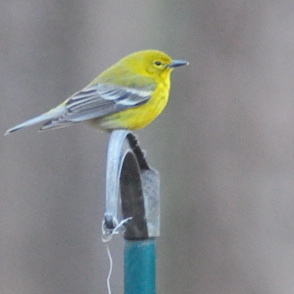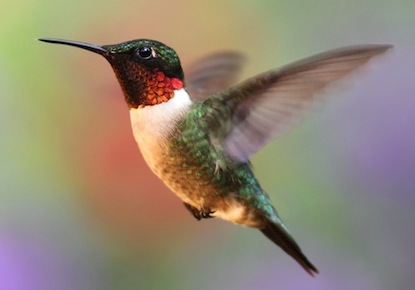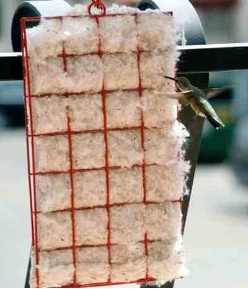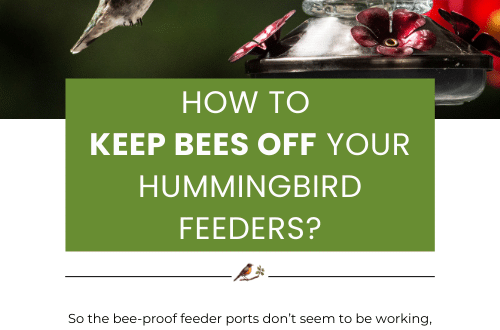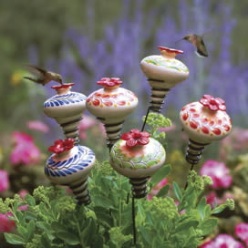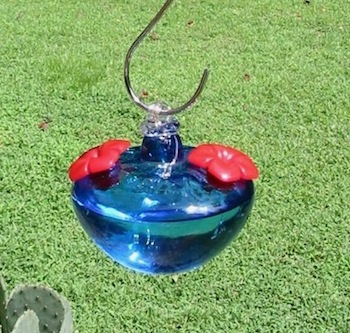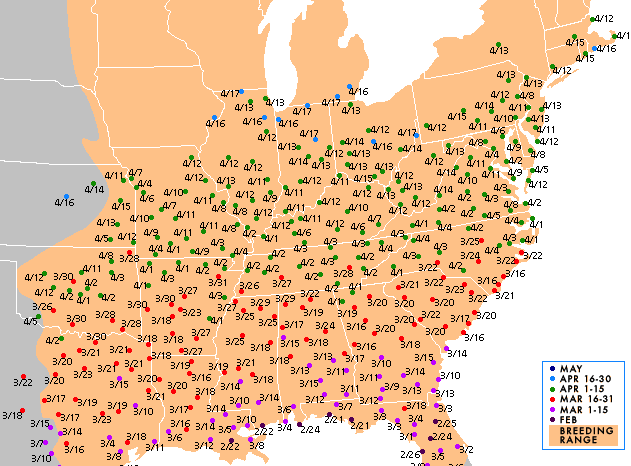-
Warblers be Gone- it’s Time for Hummingbird Feeders!
It’s time, farewell and see ya next year! Inundated every winter with pine warblers, it’s good to see them – and good to see them go as their journey North usually coincides with budding trees and blooming bulbs. This event can only mean other migratory birds are on their way, it’s really one of the best and busiest times for backyard birding!
Something about the start of nesting season and the return of hummingbirds that awakens the soul, just plain exciting for those who are really into their backyard beaked buddies 🙂
Because migration maps already show ruby-throated hummingbirds in the gulf states, they’re headed back to their favorite breeding grounds. If you saw the sprites at hummingbird feeders last season, there’s a strong likelihood they’ll return. Are you ready?
If you’re in the southeast, it’s time to dig out feeders and have them in place… this weekend would be ideal! Even if thoroughly cleaned prior to storage… rinse them well before filling. Since natural food sources are still rather scarce, sugar water can be a tad stronger. If using a commercial mix, use a little less water. If making your own nectar (highly recommended) use a 1:3 ratio. 1 cup plain table sugar to 3 cups of water. Migration is the only time nectar should ever be stronger than the standard 1:4 ratio, the extra calories serve tired and hungry birds well.
Consider some nesting material to further entice hummingbirds, after all they did come back to breed. The Hummer Helper Nest Kit was developed specifically for hummingbirds (although goldfinches like it too) and has been endorsed by Hummingbird Society president, Ross Hawkins.
Give tiny sprites a big welcome this year with freshly filled feeders and some nesting materials to help raise their families!
Check out the video and see it in use!
-
Pollinate the Garden with Hummingbird Feeders
Hey, it’s National Pollinator Week!
One of those little things often taken for granted, pollinators play a huge role in the environment and our food sources. Albert Einstein said “if the bees go, we go four years later”. This is a scary thought, as bumble bees are now being considered one of the “at-risk” pollinators of today.
Hummingbirds are pollinators, and extremely beneficial in the garden. Sadly, more and more folks are saying they’re seeing less of the tiny sprites this year. The long harsh winter may have had an adverse affect on their migration, as there were no food sources upon arrival in the gulf states. Nothing was blooming yet from where they could draw nectar.
Photo by Cathy Keller Some other surprising pollinators include: hover flies, bats, native bees, moths, and certain beetles and wasps. Laying off the pesticides helps these species thrive, as well as using native plants in the landscape. Butterflies are also major pollinators, but unfortunately are also on the “at-risk” list. Over-ripe fruit is attractive to them, and also draws fruit flies which they’ll consume. Place a chunk of melon, orange, apple or strawberry on a plate in the garden for the flying gems.
Entice beneficial pollinators to your garden by keeping hummingbird feeders fresh! Sugar ferments and spoils after just a few days in the heat. Hummingbirds won’t touch it and may not even bother to check the feeder again. And ants, just one ant in the nectar ruins the whole batch! Use an ant moat to protect nectar from these pesky critters. A dab of petroleum jelly around the top of the hanger will also thwart ants, but tends to melt after a few days of extreme heat.
The solution should be changed every 2-3 days in hot weather. Consider making your own nectar so feeding the sprites isn’t as costly. Simply plain table sugar and water… no red dye needed! Nothing else should ever be added to the solution. One cup of sugar to four cups of water, the ratio is 1:4 sugar to water. Quick, easy and economical, store unused nectar in the fridge for up to two weeks.
Plant annuals and perennials that bloom throughout the season. Tube-shaped flowers are nectar producers, as well as native vines and salvia. Using these and other native plants in the garden provides a natural and steady food source for pollinators.
Leave some bugs. A great source of protein, hummingbirds and butterflies go after tiny insects (gnats, fruit flies and others) as a large part of their diet. With the spring nesting season and lots of babies out there now, insects are an important food source. If you’re using pesticides in the yard, stop! They’re no good for anyone 🙁
Fresh water is integral to all friendly fliers. If you’re lucky enough to have a pond, creek, or stream on your property, chances are great pollinators will visit. If not, consider adding a a shallow bath. A birdbath needn’t be fancy… just shallow and fresh. The maximum depth is just 2-3 inches, even a plastic plant saucer works well. If stagnant water is of concern, consider one of many bird bath accessories to keep the water moving. Water wigglers, bath drippers, solar fountains or leaf misters are just a few options that keep water fresher for longer periods, and prevent mosquitoes from laying eggs. Hummingbirds, butterflies and songbirds are attracted to these fun additions, and will stick around to use them daily.
So there you have it… celebrate National Pollinator Week by enticing these friendly fliers to your place!
-
Eco Hummingbird Feeders for Earth Day Give-Away!
There’s some awesome eco-friendly birdhouses and feeders out there, and with vibrant colors and fun designs-they’re made to last!
To help celebrate and honor Earth Day (which should really be everyday), our friends over at A Lucky Ladybug are giving away one of our recycled art glass hummingbird feeders. Since somebody has to win… it’s definitely worth a shot entering!
The contest starts on Earth Day, Tuesday 22nd.
Do you have yours out yet? It’s time, it’s time! Because once again spring is late, many of the flowers hummingbirds naturally feed from aren’t yet available, nor are the insects on which they feast. After such a long journey over the gulf, the tiny sprites are hungry and tired… they need food to re-fuel for the continued journey North.
Here’s the Ruby-Throated migration status according to sightings reported to hummingbirds.net… see? It’s time!
If you start seeing hummingbirds and then you don’t, they may already be nesting, regardless of weather. Mother Nature gives them some serious hard wiring. For example, that crazy fighting over feeders-even when there’s plenty for everybody. It’s not just territorial. Their survival instincts are so strong, that claiming a particular hummingbird feeder is actually a matter of life or death for them!
So get your feeders out of storage and first give them a good cleaning. Warm soapy water and a thorough rinse does the trick. Mix up a batch of nectar (consider making your own this year-it’s so simple). The solution can be made a bit stronger during migration periods as extra calories are helpful… especially when natural food sources are scarce. With smaller feeders, be sure to watch nectar levels so they don’t run dry, and do keep nectar fresh, changing it every few days. If hummingbirds come across spoiled nectar… they may not return to that feeder later.
Oh yeah, and don’t forget to head on over to A Lucky Ladybug on Earth Day (Tuesday, 4/22) and enter the Give-Away! This 16-ounce capacity glass hummingbird feeder, complete with red Parasol ant moat and nectar could be yours… for many seasons of use by tiny sprites!

